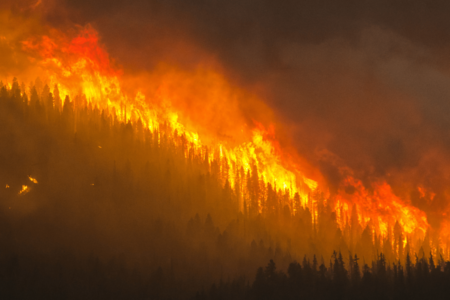The great upward and northward migration is underway
By David A Gabel, ENN
As global temperatures warm, organisms equipped with the gift of mobility and spreading their seed will seek climates with which they are familiar.
In the Earth’s northern hemisphere, this means travelling both north and to higher elevations. This movement of species has been documented for some time and is expected to continue into the future.
However, a new study from the University of York in the United Kingdom has found that plants and animals are responding to the effects of climate change up to three times faster the previously believed.
The study, conducted by researchers in the Department of Biology at the University of York, analyzed over 2,000 instances of migration from both plant and animal species. On average, species have moved to higher elevations at 12.2 meters (40 feet) per decade and to higher latitudes by an astounding 17.6 kilometers (11 miles) per decade.
This rapid movement is occurring at twice the expected rate for upward migration and three times the expected rate for northward migration.
According to project leader, Chris Thomas, “These changes are equivalent to animals and plants shifting away from the Equator at around 20 cm per hour, for every hour of the day, for every day of the year. This has been going on for the last 40 years and is set to continue for at least the rest of this century.”
Researchers claim that it is global warming that is causing the migration of species upward and northward, and that the regions where the climate has changed more has experienced more rapid movements. Species have naturally sought out environments in which climate conditions have matched those of their past and that of their ancestors.
Not all plants and animals have migrated uniformly. There is a great variation between individual species. Some move very slowly, some very fast, and others have not moved at all. Their reaction to climate change depends on their sensitivity and adaptability to new temperatures. Their movements are also effected by other factors such as loss of habitat and man-made obstructions.
Findings from the recent study have serious implications for the future of wildlife. It shows that as the climate changes, many species may be confronted with extinction as they reach the tops of the mountains or cannot move any further north.
However, not all species share this fate. Some species that prefer warmer weather will take advantage of the changing climate, spread their habitat, and increase their populations.
This study has been published in the journal, Science.
Link to published article: http://www.sciencemag.org/content/333/6045/1024.abstract


























Comments